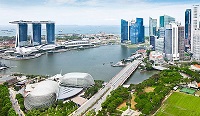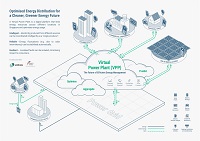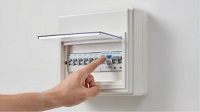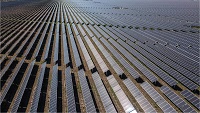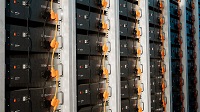Excellency and Distinguished Guests,
Ladies and Gentlemen,
Let me extend a warm welcome to all of you for the launch of the Electric Vehicle Test-bed and the MOU Signing Ceremony with our industry partners.
Electrification of Transport
More than one billion vehicles populate the earth today, pumping significant quantities of greenhouse gases into the atmosphere. With continued increase in the vehicle population worldwide and growing evidence of climate change, significant changes in transportation will be needed to bring about a more sustainable future.
One promising way forward is the electrification of land transport. Electric motors are inherently more efficient than internal combustion engines, effectively utilising more than 90 per cent of the energy provided compared to 37 per cent for today’s conventional car engine. The advantages are significant. Electric vehicles emit nothing at the tailpipe and so improve urban air quality for the local environment. There are also global warming benefits because of the reduction in carbon emissions. The magnitude of this reduction depends on the source of the electricity. If it comes from solar, hydro, wind or other forms of renewable energy, the emissions fall virtually to zero. But even if the electricity comes from a gas-fired power plant, it is still possible to reduce emissions because such plants generate energy far more efficiently than an internal combustion engine.
From a power system perspective, electric vehicles offer the intriguing prospect of vehicle-to-grid (V2G) power. This is sometimes referred to as "mobile electricity" and opens up a new array of possibilities for new uses of electricity. For example, drivers can recharge their car batteries at night during off-peak hours, and then sell electricity not used for driving back to the grid during the day when electricity demand is high. This will help to level the demand on the grid, thereby enabling the power system to operate more efficiently.
Ultimately, the key to the success of electric vehicles is the battery. The high cost of batteries today discourages their use in cars. But technology is improving steadily – newer batteries are able to store more energy in less volume at lower cost, and practically every major auto maker is pushing ahead with new innovative concepts. At this stage, it is too early to tell whether electric vehicles will take off commercially, or whether they will be superseded by other technologies like hydrogen fuel cells. We therefore need an evolving, creative response that will adapt to new scientific discoveries, and learn how best they can be used to address our energy and transportation needs.
Singapore as a Living Laboratory for Electric Vehicles
We are launching this electric vehicle test-bedding programme precisely with this objective in mind. The test-bed is a multi-agency effort involving all the relevant statutory boards, like A*STAR, EDB, EMA, LTA, and NEA. It will provide an open platform for companies to test out different electric vehicle prototypes and recharging technologies.
In many ways, Singapore is an ideal location for electric vehicles. First, our small geographical size and high-density urban setting means that the driving distances are short – the average passenger vehicle mileage is less than 60 km per day, well within the electric-driving range.
Second, our robust electricity grid and IT network enable us to deploy infrastructure to support electric vehicles with relative ease. We will also be in a position to develop and test V2G technology, with electric vehicles plugging in and supplying power back to the grid.
Third, we have developed capabilities to test, operate and maintain electric vehicles. We already have a strong cluster of industries in electronics, power and precision engineering, with a critical mass of skilled workers and technicians. We have also invested extensively in R&D, including in the area of clean energy.
With these competitive advantages, Singapore is well placed to serve as a "living laboratory" for companies to research, develop and test their ideas for electric vehicle solutions. By doing so, we hope not only to develop sustainable solutions for our own needs, but also to generate more opportunities for research and innovation, leading to new products and services that can be exported regionally and globally. All this is part of our blueprint for Sustainable Development to achieve both economic growth and a good living environment.
Memorandums of Understanding (MOUS)
The government can facilitate the development of electric vehicles, but the vehicles will only be successful if companies and consumers see value in them. This is why we are pleased to formalise our cooperation this morning with two established industry partners, Renault-Nissan and Keppel Energy.
Renault-Nissan is at the forefront of developing zero-emission vehicles, and is developing a full line-up of electric vehicles for the market. It will supply electric vehicles to Singapore for the test-bed and share its knowledge to help us develop common codes and standards.
Keppel Energy will focus on developing recharging stations and other infrastructure to support the test-bed. Its experience in this area will also complement Keppel’s broader efforts to develop infrastructure for sustainable living in the Tianjin Eco-city project.
The government agencies involved in the test-bed will work closely with these industry partners to prepare for the first batch of electric vehicles on Singapore roads by 2010. This will allow us to test out the operations of electric vehicles, assess their overall costs and benefits, and evaluate their feasibility for larger-scale deployment in the future.
Conclusion
Worldwide there is a growing concentration of resources to improve the performance and costs of electric vehicles, in preparation for a lower carbon future. Singapore is happy to play a part in this global endeavour to push out the frontiers of possibilities for electric transport, and to help develop the technology that will make these vehicles a success. Today marks the first of many steps to make electric vehicles an option for future generations in Singapore and the region.
